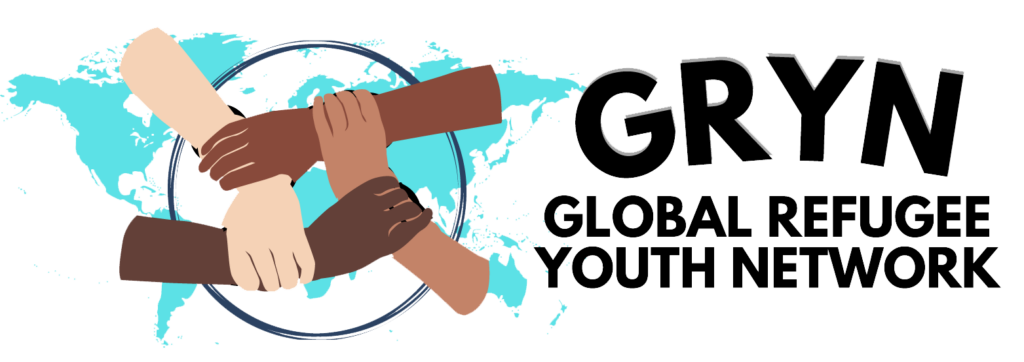
Displaced Youth Statement on the Climate Emergency and Calls to Action at the 27th Conference
of the Parties to the UN Framework Convention on Climate Change (COP27) and Beyond
November 2022
The climate emergency drives displacement and makes life harder for those already uprooted. The link between climate change and displacement is clear and growing. Those least responsible for global warming are being hit hardest.
Climate change, and its impacts on the growing adversity for people across the world, is deeply worrying. Now more than ever we must act with unprecedented urgency. There are more people displaced because of climate change around the world than ever before, and the problem is growing. Globally, the economic and non-economic losses and damages people are suffering is unprecedented. For refugees and internally displaced people, most of whom live in climate vulnerable countries, awareness and solutions are still greatly needed to address the specific challenges climate change poses in displacement settings.
The climate emergency needs each of us to bring our unique capacities at all levels of action because climate impacts, such as increasing droughts and unpredictable rainfall patterns, are driving life threatening food insecurity, crises and displacement. These are not only national challenges but global and humanitarian challenges too.
Most displaced people live and are hosted in the developing world. Many of these countries are highly climate vulnerable, but lack strong national systems for preparing and responding to disasters such as floods, wildfires and drought, among others. Even though these countries have contributed very little to climate change, the effects are disproportionately felt in these countries. This puts additional pressure on hosting governments that already have many existing challenges and responsibilities.
Those refugees hosted in climate vulnerable areas with limited and shrinking natural resources such as water, land, and forests face an increased risk of conflict between refugee and host communities over dwindling resources. Without climate adaptation that fosters a healthy environment and sustains all communities, it is difficult to prevent conflict and sustain peace at the local and national levels.
Some refugees have seen their home countries flooded, for example in Sudan and South Sudan, so even if there is relative peace, how can we ensure they can return home safely and sustainably? Without urgent adaptation action in countries and areas of return, climate change will be a hindrance to finding solutions for cycles of protracted displacement around the world.
Recommendations:
Ensure the human rights and protection of all those who are forced to flee because of climate change so that they are accorded the necessary assistance and services.
Ensure refugees and internally displaced persons, and their specific needs, are included in climate related plans, policies and strategies, in particular National Adaptation Plans (NAPs) and Nationally Determined Contributions (NDCs)
Meet the commitment to provide US $100 billion annually to support mitigation and adaptation measures in developing countries between 2021- 2024, ensuring at least 50 percent of climate finance goes to adaptation
Ensure that climate action reaches displaced people and their host communities, particularly people living in unstable and hard to reach areas
Scale up adaptation financing and support to climate action in countries and host community areas where displaced people take refuge, or hope to safely return to following their displacement, by strengthening preparedness and building resilience to climate impacts.
Ensure that efforts to address loss and damage include refugees and internally displaced people.
Fund refugee-led organizations and initiatives that are working on climate action, especially groups located where displaced populations are struggling and recovering from loss and damages due to floods, droughts and heatwaves.
Ensure strong housing systems, food security and protection for refugees, who are mostly settled in remote or poorly developed areas where there are little or no disaster response mechanisms in place.
Work with hosting governments to strengthen their national disaster preparedness and response plans, taking into account the needs of displaced people.
Create a fund for refugees in areas that are prone to climate disasters such as cyclones in Mozambique and Zimbabwe, and refugees in the horn of Africa such as Ethiopia where they do not have water and access to firewood.
Ensure energy provision as priority for refugees and refugee hosting communities so that vegetation is not cut down. Alternative energy, particularly in combination with reforestation, can address environmental issues, improve safety and quality of life, and contribute to enhancing peaceful relationships between refugee and host communities.
Support adaptation that is inclusive of both displaced people and their hosts, which has great positive impacts on health, livelihoods and wellbeing, and is also an investment in peaceful co-existence.
Be careful of misinformation on climate change and climate crisis in displacement settings, and be sure to check any language putting blame for climate crises on the local displaced populations.
Increasing climate change impacts will mean more displacement. We urgently need to keep 1.5 degrees within reach to avert the worst-case loss and damage scenarios. Global leaders must urgently increase and implement commitments to mitigate greenhouse gas emissions.
